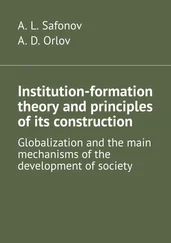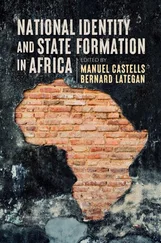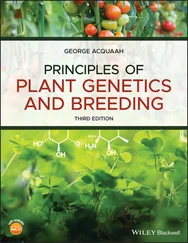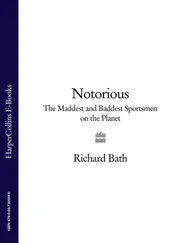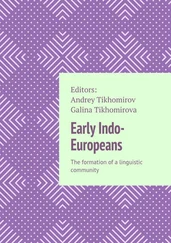Planet Formation and Panspermia
Здесь есть возможность читать онлайн «Planet Formation and Panspermia» — ознакомительный отрывок электронной книги совершенно бесплатно, а после прочтения отрывка купить полную версию. В некоторых случаях можно слушать аудио, скачать через торрент в формате fb2 и присутствует краткое содержание. Жанр: unrecognised, на английском языке. Описание произведения, (предисловие) а так же отзывы посетителей доступны на портале библиотеки ЛибКат.
- Название:Planet Formation and Panspermia
- Автор:
- Жанр:
- Год:неизвестен
- ISBN:нет данных
- Рейтинг книги:3 / 5. Голосов: 1
-
Избранное:Добавить в избранное
- Отзывы:
-
Ваша оценка:
- 60
- 1
- 2
- 3
- 4
- 5
Planet Formation and Panspermia: краткое содержание, описание и аннотация
Предлагаем к чтению аннотацию, описание, краткое содержание или предисловие (зависит от того, что написал сам автор книги «Planet Formation and Panspermia»). Если вы не нашли необходимую информацию о книге — напишите в комментариях, мы постараемся отыскать её.
Audience
Planet Formation and Panspermia — читать онлайн ознакомительный отрывок
Ниже представлен текст книги, разбитый по страницам. Система сохранения места последней прочитанной страницы, позволяет с удобством читать онлайн бесплатно книгу «Planet Formation and Panspermia», без необходимости каждый раз заново искать на чём Вы остановились. Поставьте закладку, и сможете в любой момент перейти на страницу, на которой закончили чтение.
Интервал:
Закладка:
A first discovery in this respect is a meteor, with velocity parameters consistent with an extragalactic origin [4.3]. In addition, more voluminous prospects should stem from the Milky Way and its rich history of interactions with other galaxies. Perhaps, even our Sun originated in other galaxies interacting with ours during the last 10 Gyr. Future habitability studies that will integrate Milky Way stellar orbits using data from GAIA space mission are likely to offer a probability for such a radical conjecture.
4.3 Conclusions
Incorporating the panspermia hypothesis might significantly improve the existing models by expanding them to include phenomena from the stellar level to the cosmological. As we have estimated, life need only occurs in 1 out of 2,000 galaxies to meet any assumption that life occurs throughout the universe [4.16]. The foundation of panspermia, a form of matter exchange, has a potential to improve habitability models by making them connect the habitability relevant phenomena from the stellar level to the cosmological scales of galactic clusters.
From all habitability aspects that appear to be relevant for the panspermia hypothesis, the most interesting appears to be the consequence of stellar flybys. Although the flybys can disrupt the habitability of the planets in the system, they can, in turn, fill the galaxy with scattered rogue planets and small bodies, possibly carrying living organisms.
At present, there is much evidence of organic matter almost everywhere in the universe [4.30]. The thousands of exoplanets that we have discovered so far should thus not suffer from the lack of building blocks for life. Small bodies of those systems are likely to supply such material in pristine form to respective planetary hosts. The possible evidence for abiogenesis is discussed in [4.18], such as the prevailing homochirality of dust and other interstellar matter, from which the planets are formed. Whether life first appears in the molecular gas clouds and dust or within the fully formed planetary systems is yet to be ascertained. Regardless, the latter scenario also has a panspermia potential to spread life, especially within the crowded regions of the galaxy where flybys of stellar systems are common. This might offer a goldilocks solution. While in crowded areas of a galaxy, there is much possibility for launching life carriers out into galactic space, there is less chance for life to develop in often disturbed planetary systems. Panspermia seems likely between stars in the same stellar cluster while “open” interstellar space seems to offer less prospects. On the other hand, the less crowded environments are more habitable in terms of less potential for disruption of planetary orbits and have less background radiation than stellar clusters.
If the Solar system migrated from the inner parts of the galactic disk, then it might have gathered a collection of organic/life material in addition to the budget available at its time of birth. While floating to areas less populated with stars, this material could encounter better conditions to form a biosphere on one of the Solar system planets.
It is evident that matter undergoes significant mixing, within stellar systems, galaxies, and also between galaxies. If this proves irrelevant for the appearance of life, then it should be significant and influence the evolution of life over cosmic timescales. Most of the matter in the universe mixes with its environment and could not be considered isolated for long periods of time. As suggested by one of the most prominent panspermia proponents [4.33], life should be viewed rather as a cosmic phenomenon and not a phenomenon related to Earth. Organic and possibly living material should be available across galactic space. The panspermia hypothesis appears to have no contradictions with our current knowledge and it offers a bunch of clear predictions for future empirical testing, in accordance with the best traditions of modern epistemology and the scientific method. The question that arises then is not whether life can spread/appear at some point in the galaxy but when. Future models of habitability should take this into consideration in order to be more versatile and realistic.
Acknowledgements
BV acknowledges the financial support by the Ministry of Education, Science and Technological Development of the Republic of Serbia through the contract number 451-03-68/2020/14/200002. The authors also thank Milan M. Ćirković for insightful comments on this manuscript.
References
[4.1] Adams, F.C., Proszkow, E.M., Fatuzzo, M., Myers, P.C., Early evolution of stellar groups and clusters: Environmental effects on forming planetary systems. Astrophys. J ., 641, 1, 504–525, 2006.
[4.2] Adams, F.C. and Spergel, D.N., Lithopanspermia in star-forming clusters. Astrobiology , 5, 4, 497–514, 2005.
[4.3] Afanasiev, V.L., Kalenichenko, V.V., Karachentsev, I.D., Detection of an intergalactic meteor particle with the 6-m telescope. Astrophys. Bull ., 62, 4, 301–310, 2007.
[4.4] Arrhenius, S.A., Worlds in the Making; the Evolution of the Universe , Harper, New York, 1908.
[4.5] Barclay, T., Quintana, E.V., Raymond, S.N., Penny, M.T., The demographics of rocky free-floating planets and their detectability by WFIRST. Astrophys. J ., 841, 2, #86, 2017.
[4.6] Batygin, K., Adams, F.C., Batygin, Y.K., Petigura, E.A., Dynamics of planetary systems Within star clusters: Aspects of the solar system’s early evolution. Astrophys. J ., 159, 3, #101, 2020.
[4.7] Chen, H., Litho-panspermia at the center of spiral galaxies, in: Planet formation and panspermia: New Prospects for the Movement of Life through Space [PNSP, Volume in the series Astrobiology Perspectives on Life of the Universe] , R. Gordon and J. Seckbach (Series Eds.), B. Vukotić, J. Seckbach, R. Gordon (Eds.), Wiley-Scrivener, Beverly, Massachusetts, USA, 2021.
[4.8] Ćirković, M.M., Boundaries of the habitable zone: Unifying dynamics, astrophysics, and astrobiology, in: Dynamics of Populations of Planetary Systems, Proceedings of IAU Colloquium #197 , Z. Knezevic, A. Milani (Eds.) 197, 113–118, Cambridge University Press, UK, 2005.
[4.9] Davies, M.B., Adams, F.C., Armitage, P., Chambers, J., Ford, E., Morbidelli, A., Raymond, S.N., Veras, D., The long-term dynamical evolution of planetary systems, in: Protostars and Planets VI , H. Beuther, R.S. Klessen, C.P. Dullemond, T. Henning (Eds.), pp. 787–809, University of Arizona Press, Tucson, Arizona, USA, 2014.
[4.10] Davies, P.C.W., How bio-friendly is the universe? Int. J. Astrobiology , 2, 2, 115–120, 2003.
[4.11] Đošović, V., Novaković, B., Vukotić, B., Ćirković, M.M., Water transport throughout the TRAPPIST-1 system: the role of planetesimals. Mon. Notices R. Astron. Soc ., 499, 4, 4626–4637, 2020.
[4.12] Durand-Manterola, H.J., Free-Floating planets: A viable option for panspermia. arxiv:1010.2735, 2010.
[4.13] Forgan, D., Dayal, P., Cockell, C.S., Libeskind, N., Evaluating galactic habitability using high-resolution cosmological simulations of galaxy formation. Int. J. Astrobiology , 16, 1, 60–73, 2017.
[4.14] Fregeau, J.M., Cheung, P., Portegies Zwart, S., Rasio, F.A., Stellar collisions during binary-binary and binary-single star interactions. Mon. Notices R. Astron. Soc ., 352, 1, 1–19, 2004.
[4.15] Gonzalez, G., Brownlee, D., Ward, P., The Galactic Habitable Zone: Galactic chemical evolution. Icarus , 152, 1, 185–200, 2001.
[4.16] Gordon, R. and Hoover, R.B., Could there have been a single origin of life in a Big Bang universe? R.B. Hoover, G.V. Levin, A.Y. Rozanov, P.C.W. Davies (Eds.), Proc. SPIE , 6694, #669404, 2007.
Читать дальшеИнтервал:
Закладка:
Похожие книги на «Planet Formation and Panspermia»
Представляем Вашему вниманию похожие книги на «Planet Formation and Panspermia» списком для выбора. Мы отобрали схожую по названию и смыслу литературу в надежде предоставить читателям больше вариантов отыскать новые, интересные, ещё непрочитанные произведения.
Обсуждение, отзывы о книге «Planet Formation and Panspermia» и просто собственные мнения читателей. Оставьте ваши комментарии, напишите, что Вы думаете о произведении, его смысле или главных героях. Укажите что конкретно понравилось, а что нет, и почему Вы так считаете.




